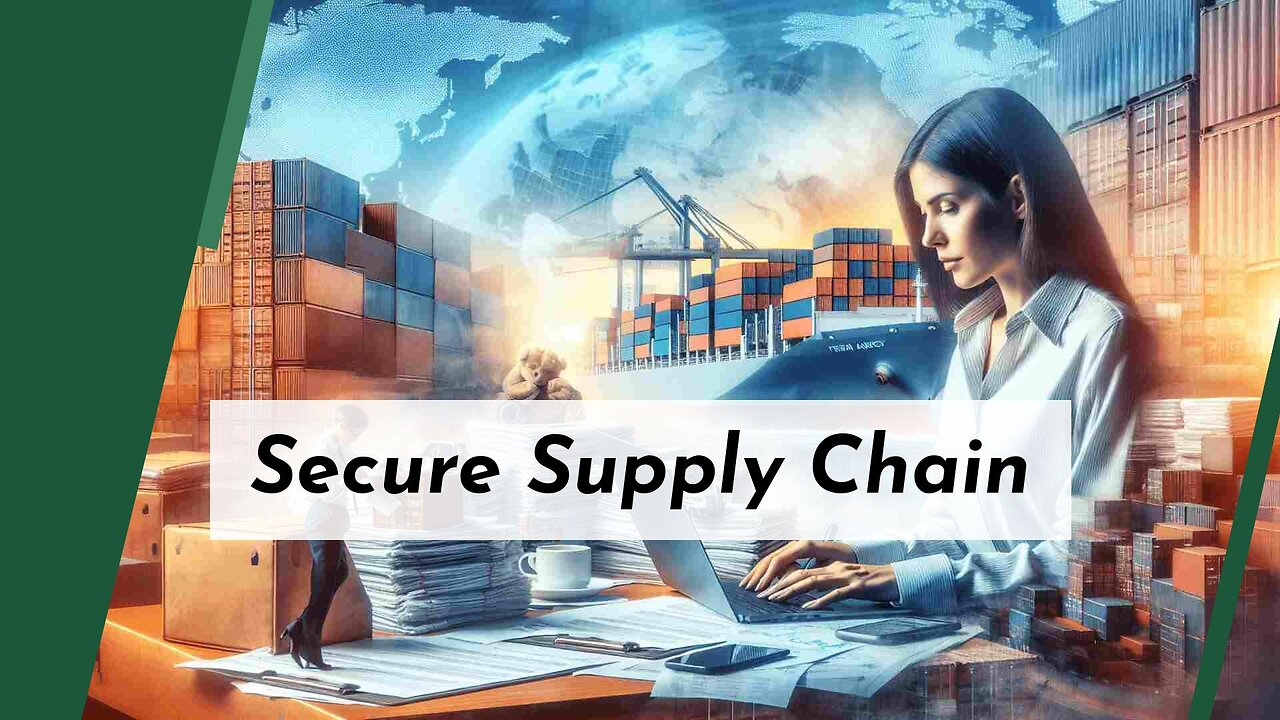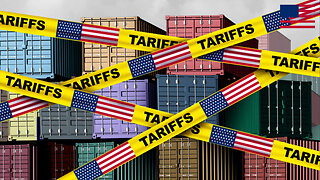Premium Only Content

Maximizing Security: How ISF and Supply Chain Alignment Mitigate Risks
ISF Checklist || 805-970-7918 || contact@isfchecklist.com || www.isfchecklist.com
Welcome back to our channel! In today's video, we'll be discussing the strategic alignment between Importer Security Filing (ISF) and supply chain security in risk assessment and mitigation.
Before we explore the interconnection between ISF and supply chain security, let's first understand what ISF is. Importer Security Filing, also known as ISF, is a requirement by the US Customs and Border Protection (CBP) for importers to provide important shipment information before goods are loaded onto vessels destined for the United States.
The ISF filing includes details such as buyer and seller information, origin and destination of the goods, and descriptions of the cargo contents. By submitting accurate and timely ISF filings, importers play an essential role in securing the global supply chain.
Now, let's look at how the strategic alignment between ISF and supply chain security is crucial for effective risk assessment and mitigation. By integrating ISF within the supply chain security framework, companies can identify potential risks and take necessary measures to mitigate them.
One of the key advantages of aligning ISF with supply chain security is early risk identification. When importers submit accurate ISF filings, customs brokers and authorities can review the information to identify any potential red flags or security concerns. This early detection allows them to take proactive measures to prevent any threats or illicit activities.
Moreover, ISF filings contribute to enhancing supply chain visibility and transparency. As ISF data is shared among various stakeholders within the supply chain, it enables greater collaboration, communication, and information sharing. This shared visibility helps all parties involved to identify potential security gaps, address vulnerabilities, and ensure smoother and secure movement of goods.
Another benefit of aligning ISF with supply chain security is the ability to assess and analyze historical data. By analyzing the information collected from ISF filings over time, companies can identify patterns, trends, and potential threats. This data-driven approach allows for more informed decision-making, risk mitigation strategies, and the development of effective security measures.
Furthermore, the integration of ISF with supply chain security promotes compliance with international trade regulations. The accurate and timely submission of ISF filings allows importers to demonstrate that they are following the regulations imposed by customs authorities. This compliance not only ensures a seamless customs clearance process but also minimizes the risk of penalties, delays, and disruptions in the supply chain.
To summarize, the strategic alignment between ISF and supply chain security is pivotal for effective risk assessment and mitigation. By integrating ISF within the supply chain security framework, companies can identify risks early, enhance supply chain visibility, analyze historical data, and ensure compliance with trade regulations.
Thank you for watching! We hope you found this video informative and insightful. Stay tuned for more videos as we delve deeper into various aspects of customs brokerage, customs bonds, and international trade. Remember to subscribe to our channel and hit the notification bell, so you never miss an update. See you next time!
#usimportbond #isfcustomsbroker #uscustomsclearing #isfentry
Video Disclaimer Here: This video is purely educational and has no ties with the US government.
0:34 - ISF is a requirement by U.S. Customs and Border Protection for importers to provide shipment information before goods are loaded onto vessels.
1:02 - Strategic alignment between ISF and supply chain security is crucial for risk assessment and mitigation.
1:21 - Benefits include early risk identification, enhanced supply chain visibility, historical data analysis, and compliance with trade regulations.
-
 1:05:37
1:05:37
Sean Unpaved
4 hours ago $2.18 earnedUnpaved
26.7K4 -
 56:40
56:40
VSiNLive
2 hours ago $1.55 earnedFollow the Money with Mitch Moss & Pauly Howard | Hour 1
21.7K2 -
 1:00:52
1:00:52
In The Litter Box w/ Jewels & Catturd
23 hours agoFIRST 40 DAYS | In the Litter Box w/ Jewels & Catturd – Ep. 754 – 3/4/2025
64.2K32 -
 1:20:04
1:20:04
Awaken With JP
6 hours agoHow Impressive is Zelensky? - LIES Ep 81
75.5K40 -
 2:14:02
2:14:02
The Quartering
6 hours agoEpstein Files FINALLY Arrive, Zelensky CRAWLS Back & Trump Cuts Off, Oscars Sink To New Low & More
96.4K44 -
 57:11
57:11
Russell Brand
4 hours agoBREAK BREAD EP. 16 - SEAN FEUCHT
86.4K5 -
 12:20
12:20
SLS - Street League Skateboarding
6 hours agoYuto Horigome's Top Moments of 2024! All The 9's 🔥
52.2K -
 1:26:52
1:26:52
The Officer Tatum
5 hours agoLIVE: Leftists RAGE As Trump HALTS Aid to Ukraine + More | Officer Tatum Show Ep 72
68.3K30 -
 1:59:43
1:59:43
The Charlie Kirk Show
6 hours agoTariffs and Trade Wars + Peace in Ukraine? + SOTU Preview | Carney, Schweizer | 3.4.25
122K26 -
 43:54
43:54
Ben Shapiro
5 hours agoEp. 2150 - Trump’s STATE OF THE UNION Pledge
75.1K43